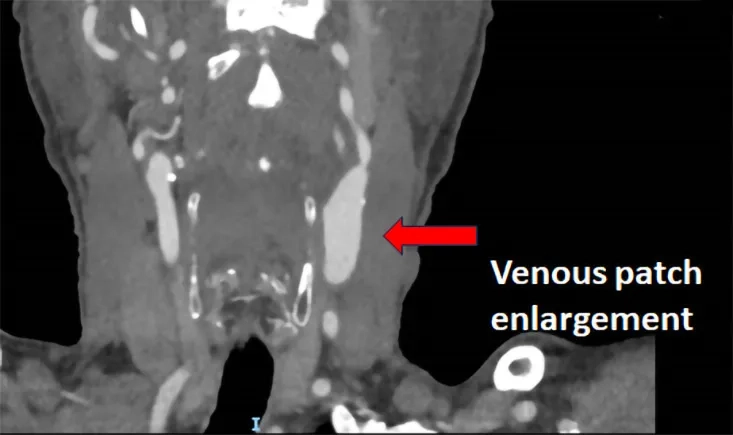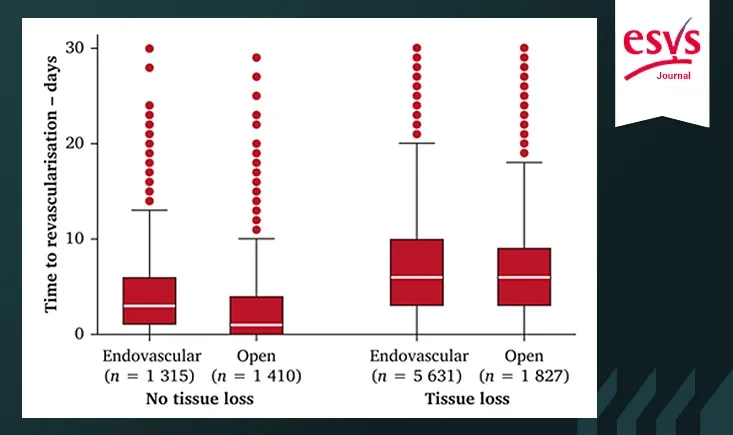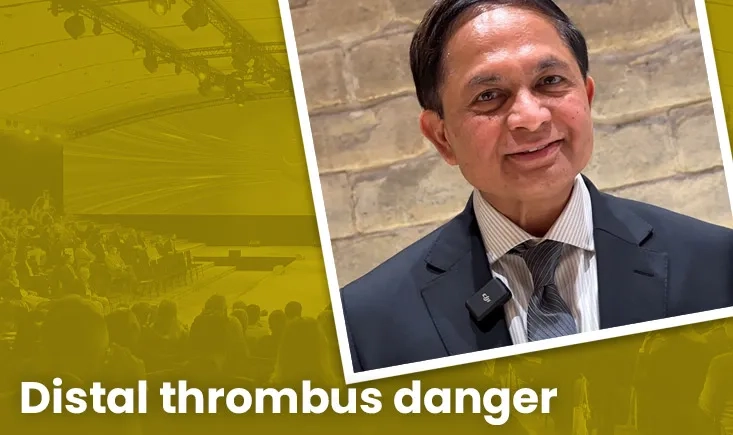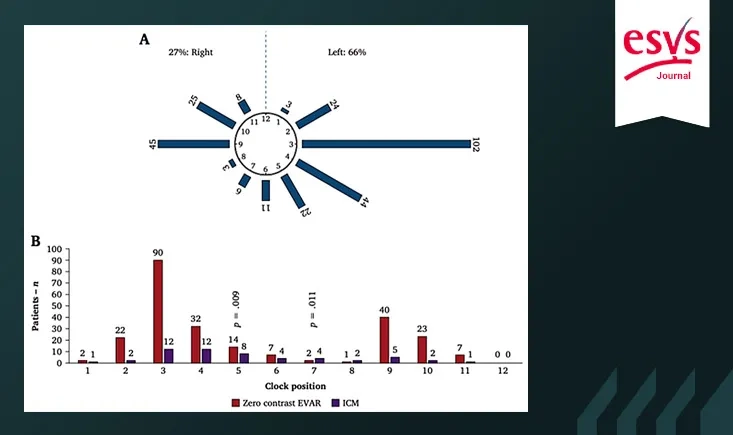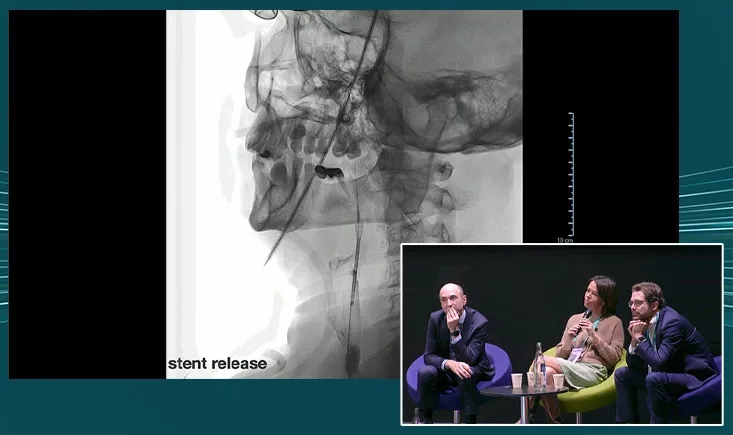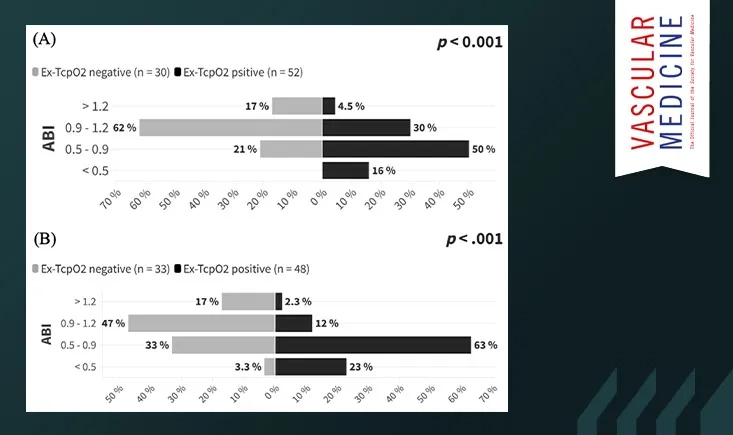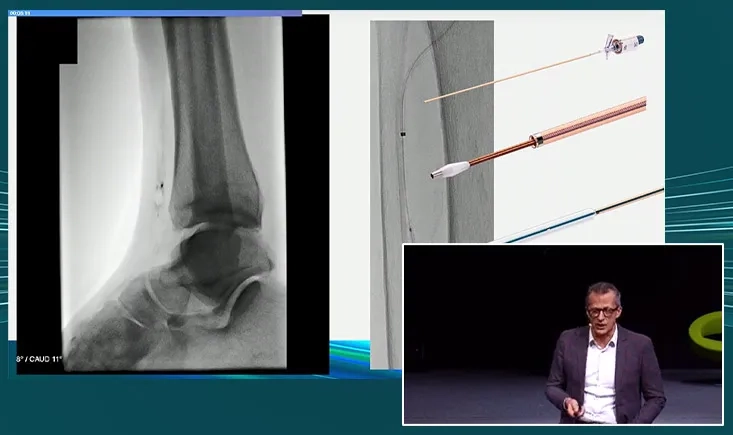Cases and resources in vascular techniques
This section provides a selection of cases and resources provided by experts in vascular techniques.
An 80-year-old patient with a complex vascular history presents with left carotid patch enlargement and tight stenosis before the venous patch. With previous strokes and surgical interventions, the case invites discussion on the best management strategy. What would you do next?
Discover key insights from the ALLIGATOR study on drug-coated balloon treatment for calcified nodules. Dr. Naoki Hayakawa, questioned by Dr. Masahiko Fujihara, explores the impact of nodular calcification on clinical outcomes after DCB angioplasty for femoropopliteal lesions. Watch now for expert analysis and future perspectives!
This study examines the effect of revascularisation timing on mortality and amputation rates in emergency CLTI patients. It found that delays, especially in those with tissue loss, led to higher one-year mortality, emphasizing the need for prompt treatment.
This single-center retrospective study assessed the safety and efficacy of popliteal access for endovascular treatment of iliofemoral occlusive disease in an office-based setting. Findings suggest that popliteal access is a safe and effective alternative for complex iliofemoral disease in outpatient care.
Speaking at the PVI 2024 session on complications and troubleshooting, Dr. Lakshminarayan shared his insights on embolisation and thrombosis—two closely linked challenges in peripheral arterial disease management.
This study explores the safety and feasibility of using CO2 angiography for standardised EVAR without iodine contrast. Involving 293 patients with asymptomatic abdominal aortic aneurysms, it shows that the zero-iodine protocol is effective in 82 % of cases and yields high procedural success rates.
Discover how the CGuard™ stent enhances plaque coverage, embolic protection, and precision in carotid artery stenting. Watch expert case reviews and clinical trial updates in this PVI 2024 session!
This case details a 71-year-old male with a history of AAA and multiple interventions, now facing a large Type II endoleak. Despite several treatments over the years, the endoleak persists, posing a significant challenge. Review the clinical data, imaging, and consider the next steps in treatment through our poll!
This prospective study assessed the link between Ex-TcpO2 results and postoperative outcomes in 82 patients with intermittent claudication. Clinical improvement and patency rates correlated with Ex-TcpO2 findings, highlighting its potential as a diagnostic tool, particularly for atypical or uncertain arterial claudication.
At PVI 2024, Dr. Bruno Migliara explores the challenges of treating below-the-knee disease and demonstrates how the Oscar device (4F & 6F) simplifies crossing and preparation in even the most complex BTK and BTA lesions. With real-world clinical examples, see how - thanks to its support catheter, dilator, and length-adjustable PTA balloon - Oscar tackles CTOs, calcification, small-vessel disease, and more. Watch now to see Oscar in action!
